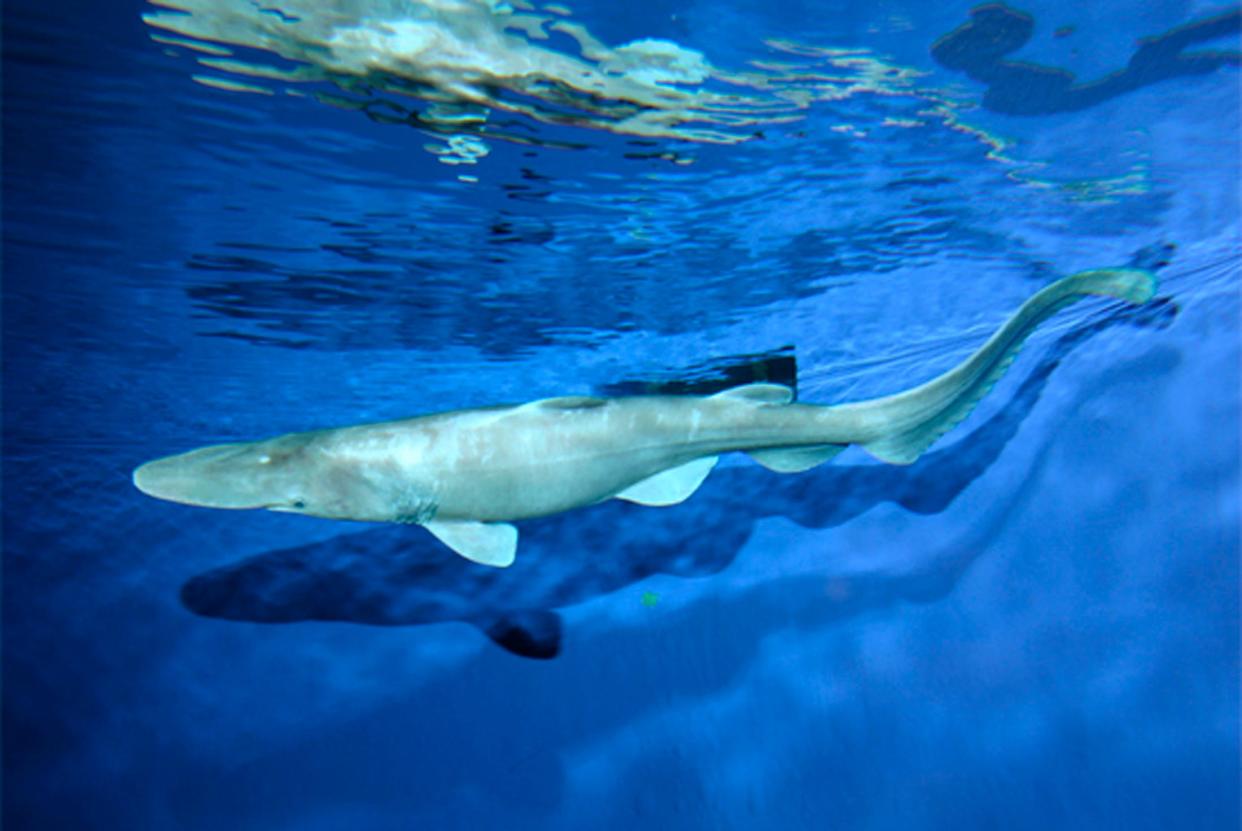Rare deep sea shark or plastic eBay toy? Scientists and shark experts can't seem to agree.

Three scientists published a photo in 2022 of what they thought was a rare shark sighting.
But other shark experts called the specimen into question, saying it looks like a plastic toy.
The photo was retracted on March 20, though its authors say they still believe the specimen is real.
Scientists who reported a sighting of a rare goblin shark have now retracted their findings after widespread suspicion that the specimen may have actually been a toy.
A photo of what was originally thought to be a goblin shark lying on several beach rocks was originally published by three marine biologists in the Mediterranean Marine Science journal in May. The image was submitted by a citizen scientist in Greece named Giannis Papadakis, who was credited with taking the photo in August 2020, the three scientists wrote.
This shark appeared to be preserved in remarkable condition, and the marine scientists, who never observed or interacted with the specimen in the photo, said it was likely a juvenile or baby since they were told it was no longer than 31 inches.
Goblin shark sightings are considerably rare. This is because these sharks are typically found at the bottom of the deep sea along the edge of continents, at depths of at least 4,265 feet.
Other marine biologists and shark experts have called the photo into question over the last few months.
Four marine scientists jointly published a November comment on the paper, noting several oddities. The shark had too few gills, had the wrong fins, looked weirdly stiff, and was missing teeth, they said.
—Dr. David Shiffman (@WhySharksMatter) March 17, 2023
"Doubts arise about the authenticity of the image provided as figure to support the record," they wrote. They also noted that they had no way of verifying if Papadakis found the shark and was the person who took the photo of it.
Discussions about the photo spread online to the Facebook group "Shark References," frequented by shark experts and enthusiasts, where consensus was that the specimen wasn't the real deal.
Some in the group noticed that the shark bore a striking similarity to a plastic toy shark sold by the Italian toy manufacturer DeAgostini, which can be found on eBay.
Others noted the absence of a scale bar, making it difficult to verify the size of the shark in the photo. The authors of the original paper say they used a rock for scale instead.
—Dr. David Shiffman (@WhySharksMatter) March 15, 2023
As controversy brewed around the shark, the three scientists who submitted the photo — Athanasios Anastasiadis, Evangelos Papadimitriou, and Frithjof C. Küpper — revised their commentary in January.
This time, they said the shark was likely around seven inches long. The trio suggested it could have been an embryo with deformities as an explanation for the inconsistencies in the photo.
"I do not think this is plausible," Jurgen Pollerspöck, a co-author of the November comment that questioned the shark's authenticity, told Insider in an email.
Goblin sharks have a birth size of at least 30 inches, and there are no records to back up the original authors' revision, he said.
Pollerspöck also told The New York Times that goblin shark embryos likely wouldn't have managed to stay alive long enough to wash up on the shore.
The photo ended up being retracted altogether on March 20 by the three authors of the original paper, who cited "remaining uncertainty" about the finding.
"The available information was not adequate to support this record based solely on photographic evidence and direct contact between the authors and the citizen," the retraction said.
Explaining why the photo was retracted, co-author Küpper, chair of marine biodiversity at University of Aberdeen in Scotland, told The Daily Beast that the trio still believe their finding was authentic.
"Even though we have every reason to assume that the finding was authentic (several Mediterranean shark experts and [two] anonymous peer reviewers accepted and supported publication of this paper!), other colleagues caused a completely unethical controversy and claimed that the specimen was a discarded plastic figurine," he wrote.
"In order to avoid further damage and given that the specimen had not been conserved by the citizen scientist in Anafi (Papadakis), we decided to retract the article," added Küpper, per The Daily Beast.
The authors of the original paper did not immediately respond to Insider's request for comment.
Read the original article on Insider


